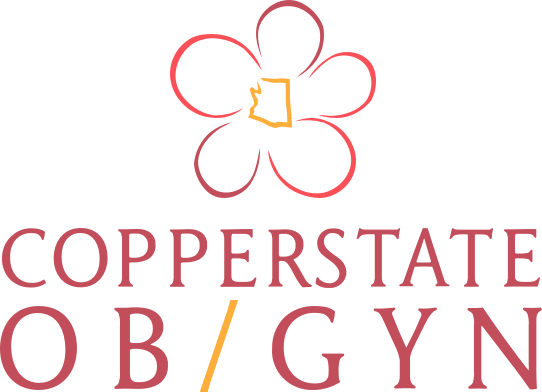When you give birth, your attention will likely be focused on keeping your newborn healthy and happy. But some new mothers experience postpartum preeclampsia, which requires an early diagnosis for proper treatment. In this article, we’ll discuss what you need to know, symptoms, causes, risk factors, and possible treatments.
What You Need To Know
Preeclampsia is a blood pressure-related condition that occurs during pregnancy. Typically it resolves itself right after the birth of the baby, but some women develop postpartum preeclampsia. Postpartum preeclampsia usually develops within the first week after delivery. Sometimes it can develop as late as six weeks after the baby is born, which is known as late postpartum preeclampsia.
It’s important to note that you may not know you have postpartum preeclampsia, especially when you’re preoccupied with caring for a newborn. If your doctor suspects you have postpartum preeclampsia, you may be readmitted to the hospital.
Keep all your follow-up appointments with your doctor, including your one week after discharge appointment and watch for the warning signs, which include:
- Stomach pain
- Nausea and vomiting
- Swelling in hands or face
- Severe headaches
- Vision changes
- Shortness of breath
Signs & Symptoms
The signs and symptoms of postpartum preeclampsia are similar to those of preeclampsia. Follow up with your doctor who will monitor for:
- High blood pressure – 140/90 mmHg or greater
- Excess protein in urine
- Severe headaches
- Vision changes, such as temporary vision loss, light sensitivity, blurred vision
- Abdominal pain, usually under the ribs on the upper right side
- Decreased urination
If you experience any of these symptoms, contact your health care provider right away. They will diagnose postpartum preeclampsia through blood tests and urinalysis.
- Blood tests – Determine whether there is a normal number of platelets (the cells that help with blood clots) in your blood. This will determine how well your liver and kidneys are functioning.
- Urinalysis – A urine sample will test how much protein is in your urine. It often takes 24 hours to collect your urine for analysis.
Causes
Doctors don’t have a clear answer of what causes preeclampsia, but they do know that delivery is not always the cure. Sometimes preeclampsia develops while a woman is pregnant and she doesn’t show signs or symptoms until after delivery.
Postpartum preeclampsia can happen to any woman. Even if you don’t have signs of preeclampsia during your pregnancy, you can still develop postpartum preeclampsia.
Risk Factors
We don’t know exactly what causes preeclampsia, but there are some possible risk factors:
- Obesity – You have a higher risk for preeclampsia if you are obese
- Diabetes – If you have Type 1 or 2 Diabetes, you’re more at risk for preeclampsia
- Birth to Multiples – Giving birth to multiples increases your chances for preeclampsia
- History of preeclampsia – If you developed high blood pressure in the second half of your pregnancy, you may be more at risk for postpartum preeclampsia
- Hypertension – Uncontrolled high blood pressure increases your chances of developing postpartum preeclampsia
- C-Section – Having a cesarean birth may make you more likely to develop postpartum preeclampsia
Treatment
Luckily, postpartum preeclampsia can be treated with medication. Your doctor may prescribe medication to lower high blood pressure and to prevent seizures.
- Antihypertensive medication – Your doctor may prescribe a medication to regulate your blood pressure if it’s dangerously high.
- Magnesium sulfate – Severe symptoms of preeclampsia include seizures. If you suffer from these, your doctor may prescribe magnesium sulfate for 24 hours. After taking it, your blood pressure and other symptoms will need to be closely monitored.
Note that your doctor may not recommend breastfeeding during postpartum preeclampsia treatment. While high blood pressure medications have no or minimal risk to the newborn, it’s best to check with your doctor to see if it’s safe.
Prevention
Postpartum preeclampsia is uncommon, so you shouldn’t lose sleep over developing it. However, there are some ways you can decrease your likelihood of getting it.
- Baby aspirin – If you have had high blood pressure issues in a previous pregnancy, your doctor may prescribe baby aspirin to prevent postpartum preeclampsia.
- Healthy lifestyle – Obesity and diabetes are risk factors for postpartum preeclampsia, so eating a healthy diet and active lifestyle will help minimize the possibility of developing it.
- Watch for symptoms – Sometimes, there’s nothing you can do to prevent developing postpartum preeclampsia. Watch for the signs and symptoms so you can get diagnosed right away. An early diagnosis can save your life. It may be difficult to detect warning signs while you’re caring for a newborn, so refer back to the list of symptoms often and call your doctor if you experience any.
Postpartum preeclampsia is difficult to notice on your own, so it’s important to attend all your doctor appointments. Pay attention to your body and take note of anything that feels different. If you have any concerns, it doesn’t hurt to call your doctor.
Are you looking for an OB/Gyn you can trust? Do you live in the Tucson area? Let us join you on your amazing and unique pregnancy journey. Book an appointment today!
Sources:
- https://www.mayoclinic.org/diseases-conditions/postpartum-preeclampsia/diagnosis-treatment/drc-20376652
- https://www.mayoclinic.org/diseases-conditions/postpartum-preeclampsia/symptoms-causes/syc-20376646
- https://www.preeclampsia.org/postpartum-preeclampsia
- https://www.marchofdimes.org/find-support/topics/pregnancy/preeclampsia
- https://www.copperstateobgyn.com/preeclampsia/

